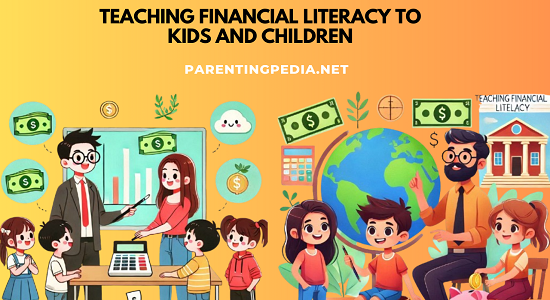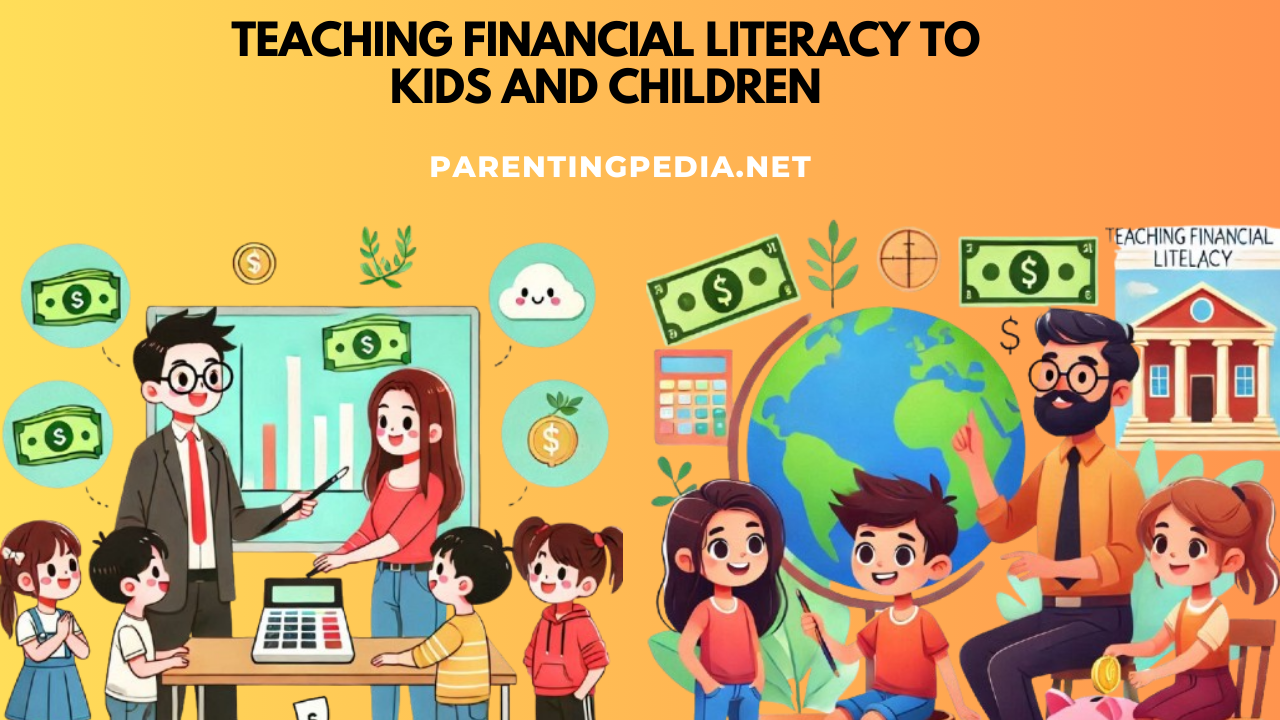Financial literacy is a critical life skill that helps children understand how to manage money, make informed financial decisions, and prepare for a secure future. Teaching kids about money from an early age make them understand how they need to handle their finances responsibly as adults. Here, in this article, we will talk about simple and effective ways to teach financial literacy to kids. We will also discuss why it is important for children to learn about financial literacy and how it will impact their life.
Why Is Financial Literacy Important for Kids?
Financial literacy is important for kids because of following reasons:
- Builds a Strong Foundation: Teaching kids about money early on helps them develop a healthy relationship with finances, and prevent them from developing habits like excessive spending or poor saving habits.
- Promotes Independence: Understanding money promotes independence in children, allowing kids to make smart choices as they grow older.
- Encourages Goal Setting: Learning about saving and budgeting helps children plan for future goals, whether it is buying a toy, saving for college, or managing living expenses.
Key Concepts To Teach Kids About Money
What Is Money – Money is a tool used to buy goods and services. Explain how money is earned through work, and how it is exchanged for things we need and want.
Earning Money – Teach kids that money doesn’t grow on trees, rather, it is earned through efforts. Engaging them in simple chores or small jobs like babysitting or selling handmade crafts can introduce them to the concept of earning.
Saving Money – Saving teaches delayed gratification and helps kids prioritize future needs over immediate wants. Use a piggy bank or savings jar to make saving tangible and fun for children.
Spending Wisely – Explain the difference between needs (food, clothes, shelter) and wants (toys, gadgets). Encourage kids to think before spending and weigh their choices.
Budgeting – Show them how to plan their spending by setting aside money for different purposes like saving, spending, and sharing (for donations or gifts).
Borrowing and Lending – Introduce the concept of borrowing and lending by explaining loans, interest, and the importance of repaying borrowed money on time.
Investing – For older children, explain how investments work and how they can help money grow over time. Start with simple examples like savings accounts or stocks.
How To Teach Financial Literacy By Age Group
Young Children (Ages 3-6):
Use Play Money: Introduce the concept of money through play cash and pretend shopping.
Talk About Choices: Discuss simple spending decisions with children, like choosing between two snacks.
Start a Savings Jar: Encourage them to save coins for something they want, like a toy.
School-Age Kids (Ages 7-12):
Give an Allowance: Assign a weekly allowance and let them manage it, teaching them to distribute funds for saving, spending, and sharing.
Set Savings Goals: Help them save for bigger purchases by setting short-term goals.
Introduce Basic Budgeting: Use charts or apps to track their spending and savings.
Teenagers (Ages 13-18):
Open a Bank Account: Teach them to manage a savings or checking account and understand how banking works.
Discuss Real-Life Costs: Show them how much things like rent, groceries, and bills cost, so they appreciate financial responsibilities.
Teach About Credit: Explain credit cards, loans, interest, and how to use credit wisely.
Encourage Part-Time Jobs: Earning their own money can teach responsibility and the value of hard work.
Fun Activities To Teach Financial Literacy
Money Games: Use board games like Monopoly or online money management games to make learning fun.
Shopping Challenges: Give kids a small budget for grocery shopping and let them make choices to stay within the limit.
Savings Match: Encourage saving by matching a portion of what they save to encourage children.
Storybooks and Videos: Use age-appropriate books or videos that explain financial concepts in a simple, engaging way.
Teaching Through Everyday Experiences
At the Store: Discuss prices and discounts with children and how to compare value when shopping. Show them how to use cash or cards and explain the importance of receipts.
Planning for Holidays or Events: Involve kids in budgeting for holidays, such as setting a gift budget or planning a vacation.
Also Read: Importance Of Effective Communication With Young Children
Sharing and Donations: Teach the value of giving by encouraging them to donate to a cause they care about.
Household Expenses: Explain utility bills, grocery costs, and how to conserve resources like water and electricity to save money.

Important Lessons For Kids Regarding Financial Literacy
Money Has Limits: Teach that money is finite and spending it all on one thing means there is less for other needs or wants.
Set Financial Goals: Encourage kids to dream big but plan practically. Whether it is saving for a bike or college, goals motivate good financial habits.
The Power of Compound Interest: For older kids, explain how saving and investing early can make money grow significantly over time.
Avoid Debt Traps: Teach children and teenagers about financial literacy by warning them about the dangers of excessive borrowing and credit card debt.
Learn From Mistakes: Let kids make small financial mistakes now so they learn lessons early without serious consequences.
The Role Of Parents And Teachers In Teaching Financial Literacy To Kids
- Be a Role Model: Kids learn by watching their elders. Demonstrate good financial habits, like budgeting, saving, and planning.
- Talk Openly About Money: Create a safe space for discussions about money, allowing kids to ask questions and share their thoughts about money.
- Use Technology: Use financial literacy apps and tools designed for kids to teach saving, budgeting, and investing.
- Celebrate Milestones: Recognize and celebrate when kids reach financial goals to reinforce positive behaviors in them.
Side Effects Of Not Teaching Financial Literacy To Kids
Not teaching children the importance of money can lead to significant long-term consequences. Without financial literacy, kids may develop poor spending habits, struggle to differentiate between needs and wants, and fail to save or budget effectively. This lack of understanding can result in impulsive spending, excessive debt, and an inability to manage financial responsibilities as adults. They may also miss opportunities to invest wisely, leaving them unprepared for emergencies or future goals. Additionally, they could face challenges in building financial independence, leading to stress and dependency on others. Early education about money helps prevent these problems and promote financial stability in children.
Conclusion
Teaching financial literacy to kids is an investment in their future. By starting early and using practical, methods, parents and educators can empower children with the knowledge and skills they need to navigate the financial challenges of life. Remember, the goal is not just to teach kids about money, it is to help them develop a mindset that values responsibility, planning, and smart decision-making. With patience and consistent effort, kids can grow into financially savvy adults ready to face the world.
FAQ
How to teach financial literacy to children?
Teach financial literacy by introducing money basics early. Use activities like saving in jars, budgeting allowances, and comparing prices during shopping. Encourage earning through chores or small jobs. Discuss needs vs. wants, set savings goals, and involve children in simple financial decisions. Make learning financial literacy fun with games and real-life examples.
How to teach value of money to kids?
Teach kids the value of money by linking it to effort, like earning through chores. Use real-life examples, such as saving for a toy, to show the importance of planning. Involve children in budgeting, and encourage small savings goals to highlight money’s role in achieving objectives in life.
Remember, the greatest reward of parenting lies in watching
your children soar with love and confidence.
Till then keep smiling and be happy

